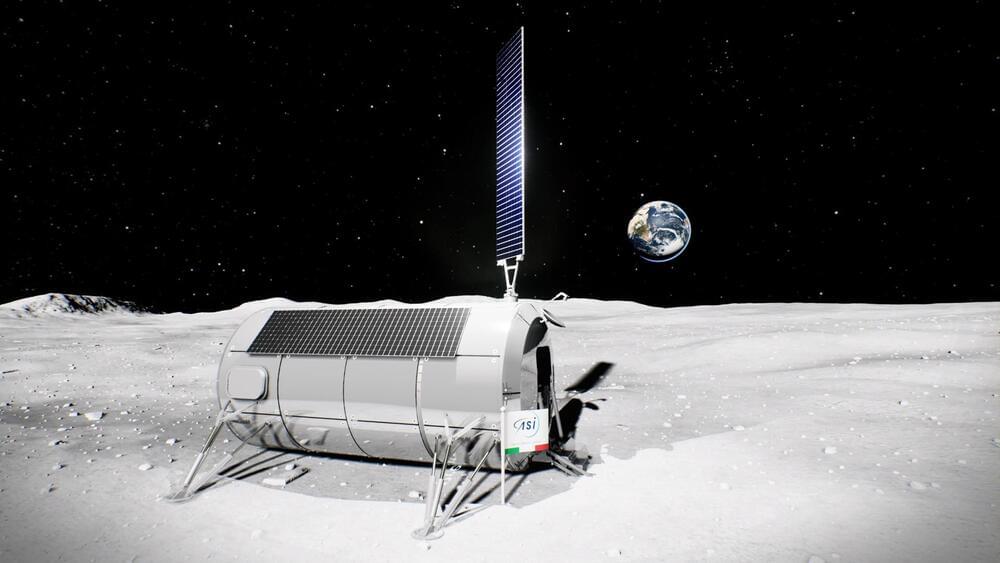Severe solar storms are estimated to affect Earth every 150 years, and they pose a threat to power grids and other infrastructure. Scientists are building new models and working with industries to avoid a worst-case scenario. Illustration: Michael Tabb.
Category: habitats – Page 24




Biohybrid microrobots could remove micro- and nano-plastics from aquatic environments
Seas, oceans, rivers, and other bodies of water on Earth have become increasingly polluted over the past decades, and this is threatening the survival of many aquatic species. This pollution takes a wide range of forms, including the proliferation of so-called micro and nano plastics.
As suggested by their name, micro and nano plastics are harmful tiny particles derived from the disintegration of plastic waste released into the water. These particles have been found to disrupt aquatic ecosystems, for instance, delaying the growth of organisms, reducing their food intake, and damaging fish habitats.
Devising effective technologies to effectively remove these tiny particles is of utmost importance, as it could help to protect endangered species and their natural environments. These technologies should be carefully designed to prevent further pollution and destruction; thus, they should be based on environmentally friendly materials.

‘Adopt an axolotl’ campaign launches in Mexico to save iconic species
MEXICO CITY (AP) — Ecologists from Mexico’s National Autonomous university on Friday relaunched a fundraising campaign to bolster conservation efforts for axolotls, an iconic, endangered fish-like type of salamander.
The campaign, called “Adoptaxolotl,” asks people for as little as 600 pesos (about $35) to virtually adopt one of the tiny “water monsters.” Virtual adoption comes with live updates on your axolotl’s health. For less, donors can buy one of the creatures a virtual dinner.
In their main habitat the population density of Mexican axolotls (ah-ho-LOH’-tulz) has plummeted 99.5% in under two decades, according to scientists behind the fundraiser.

Tariq Khayyat Design Partners creates “tulip field” of townhouses in Dubai
Architect Tariq Khayyat has designed The Fold, a sculptural housing development in Dubai that features curved facades and aims to create a “communal oasis” behind a main road.
The Fold, which comprises 28 terraced townhouses, is located along the large Al Wasl Road in Dubai’s Jumeirah district and was designed to have a more organic feel than neighbouring developments.
“We wanted to plant a tulip field on the Al Wasl Road,” Tariq Khayyat Design Partners founder Khayyat told Dezeen.

Greg Brockman quits OpenAI after abrupt firing of Sam Altman
OpenAI co-founder and president Greg Brockman has quit the firm, he said Friday, hours after the Microsoft-backed giant abruptly fired its chief executive Sam Altman and assured that Brockman would remain at the startup. Brockman’s sudden departure adds to the day’s uncertainties at OpenAI, following closely on the heels of its maiden developer conference led by Altman.
“I’m super proud of what we’ve all built together since starting in my apartment 8 years ago. We’ve ben through tough & great times together, accomplishing so much despite all the reasons it should have been impossible,” wrote Brockman in a message to OpenAI team. “But based on today’s news, I quit. Genuinely wishing you all nothing but the best. I continue to believe in the mission of creating safe AGI that benefits all of humanity.”
OpenAI earlier said that Brockman was stepping down as chairman of the board, but will remain at the firm. Brockman, who co-founded OpenAI with Altman, is a close confidant of the former OpenAI chief executive.
NASA Explorers Season 6, Episode 1: Launch
A journey of a billion miles and back begins with a launch.
OSIRIS-REx’s goal: Travel to asteroid Bennu, collect a sample, and return it home. But why Bennu? Meet the NASA Explorers looking for clues to our early solar system in a sample of asteroid rock.
It’s not rockets and satellites that make NASA soar. It’s people. Go inside the space agency and follow the pioneers, risk-takers and experts at the frontline of exploration. This season, follow along with the OSIRIS-REx team, as they launch a spacecraft to an asteroid, collect a sample of Bennu, and bring it home to Earth.
Watch this series and more on NASA+, our no cost, ad-free streaming service. No subscription required. https://plus.nasa.gov.
Created by: James Tralie.
Producers: James Tralie, Dan Gallagher, Lauren Ward, Katy Mersmann.
Scientists: Dante Lauretta, Mike Drake, Dani DellaGiustina, Christina Richey, Jason Dworkin, Rich Kuhns, Sandy Freund, Olivia Billett.
Videographers: Rob Andreoli, John Philyaw, John Caldwell.
Animation: Walt Feimer, Michael Lentz, Jonathan North, Adriana Manrique Gutierrez, Krystofer Kim, James Tralie, Bailee DesRocher, Jacquelyn DeMink, Lisa Poje.
Sound Design: James Tralie.
Data Visualization: Kel Elkins.
NASA+ Executive Producer: Rebecca Sirmons.
Music provided by Universal Production Music: “Vortex” Tom Sue and Zac Singerz; “Tested to the Limit” Krantz; “Interstellar” Alan Myson; “Ascension” Alan Myson; “In a Perfect World” Angus Pendergast; “Tough Terrain” Ty Unwin; “Do Androids Dream” Aidan Lavelle; “Kyoto Vision” Andy Blythe and Marten Joustra; “Presidential Destiny” Laurent Dury; “Driving Force” Ben Niblett and Jon Cotton; “Break the Rules” Tihomir Hristozov; “Deadlock” Dean McGinnes; “Final Preparations” Alan Boyd; “Tundra Sunrise” Ty Unwin; “Zero In” Airglo; “Stepping out of the Darkness” Ty Unwin; “Dark Intensity” Jeremy Smith; “Regeneration” Andy Blythe and Marten Joustra; “Warm Drift” Alan Myson; “Distant Suns” Jason Soudah; “Scenes of Devastation” Benji Merrison and Will Slater; “Look to the Stars” Alan Boyd; “Warming” Benji Merrison and Will Slater.

Buildings transform into giant robots in Japanese real estate company’s anime commercial【Video】
Imagine a house that also turns into a robot 😀 Then you can just move it super easily anywhere: D.
When was the last time you sat down to watch a YouTube video by a real estate company? We’re going to assume never, because who even knew that real estate companies had YouTube accounts?
Japan’s Mitsui Real Estate Residential, however, not only has a YouTube account, but their recently posted video is becoming wildly popular. The company managed to combine their housing expertise with the fail-safe giant robot genre to create a short animated series about apartment buildings that transform into giant robots!
▼ Chou Kidou Gaiku: Kashiwa-no-Ha – Chapter 1: The Gate Tower.